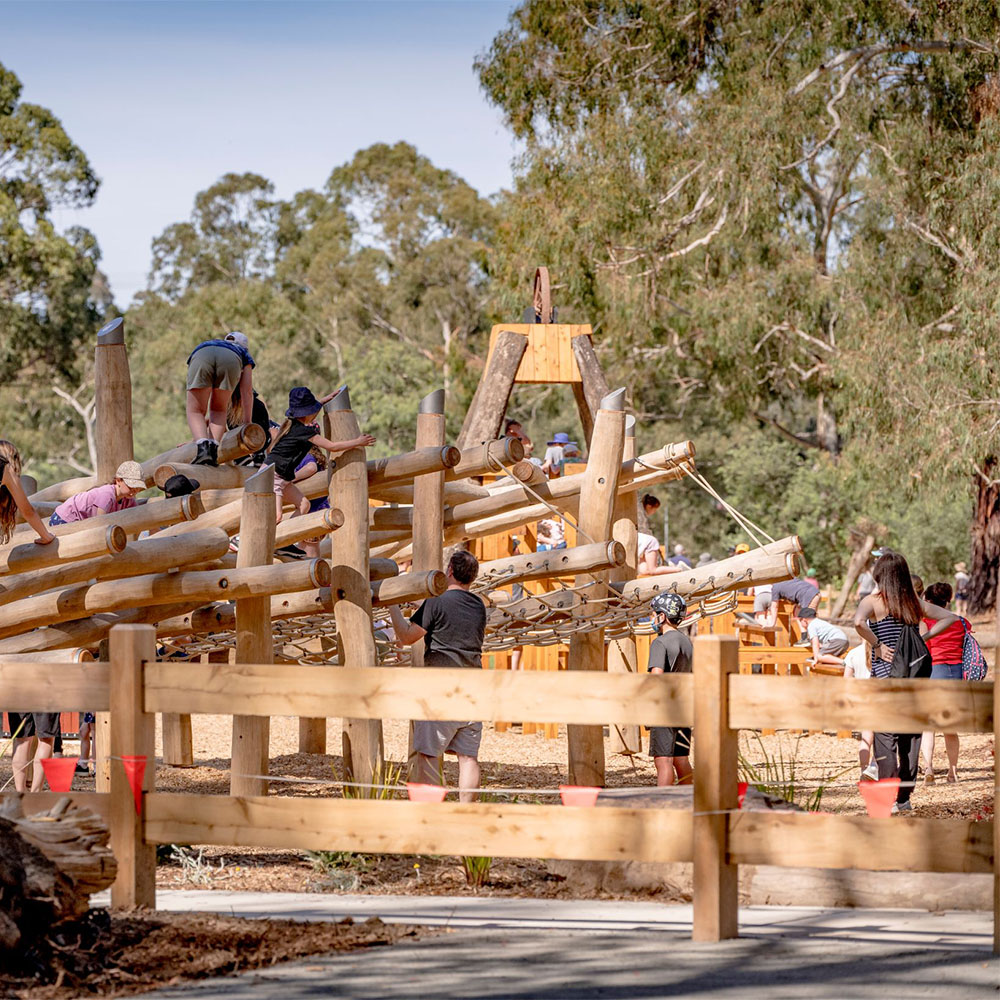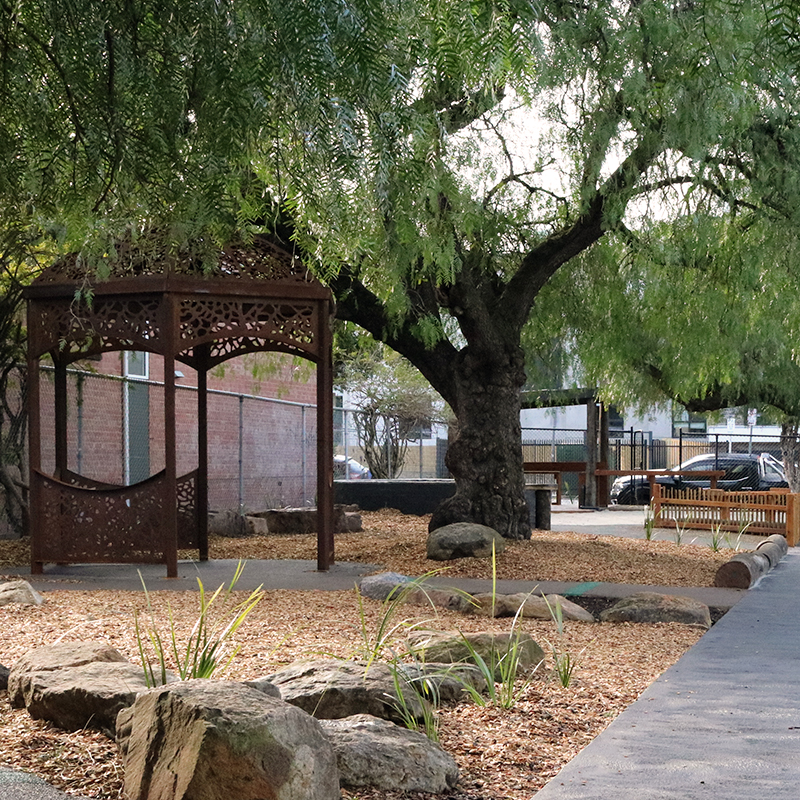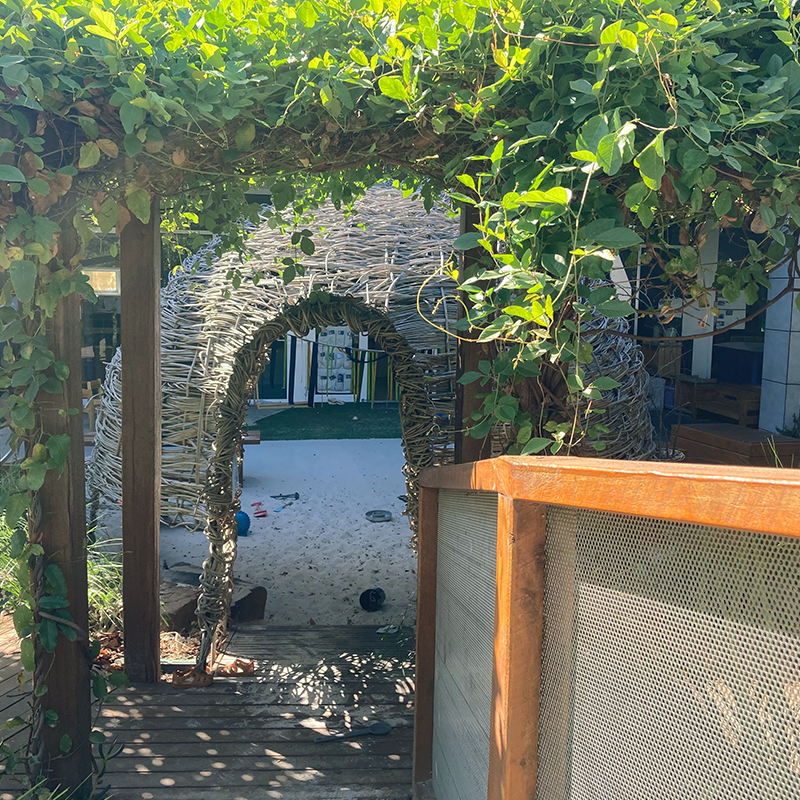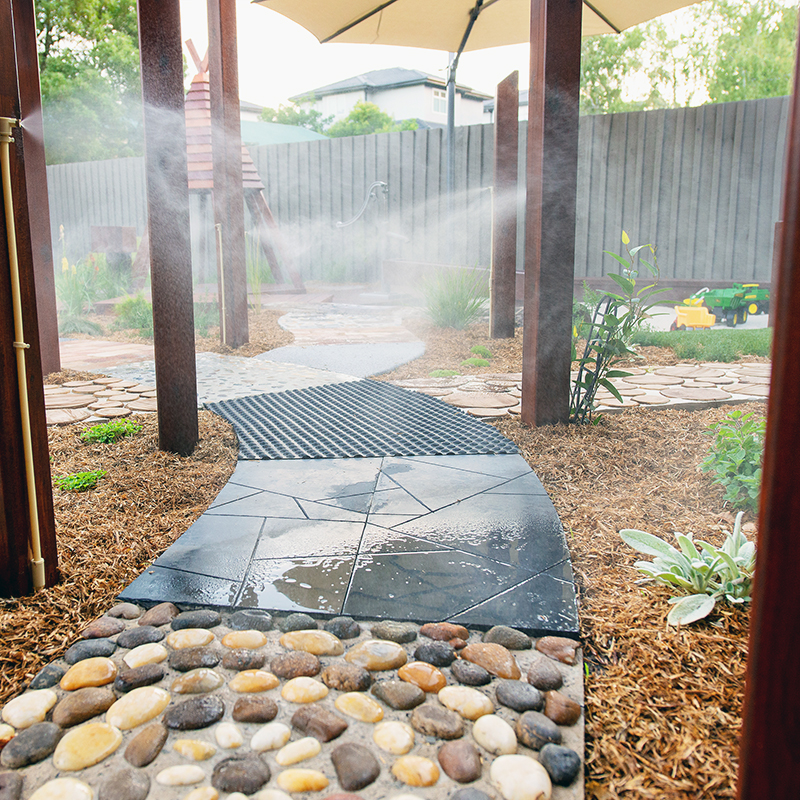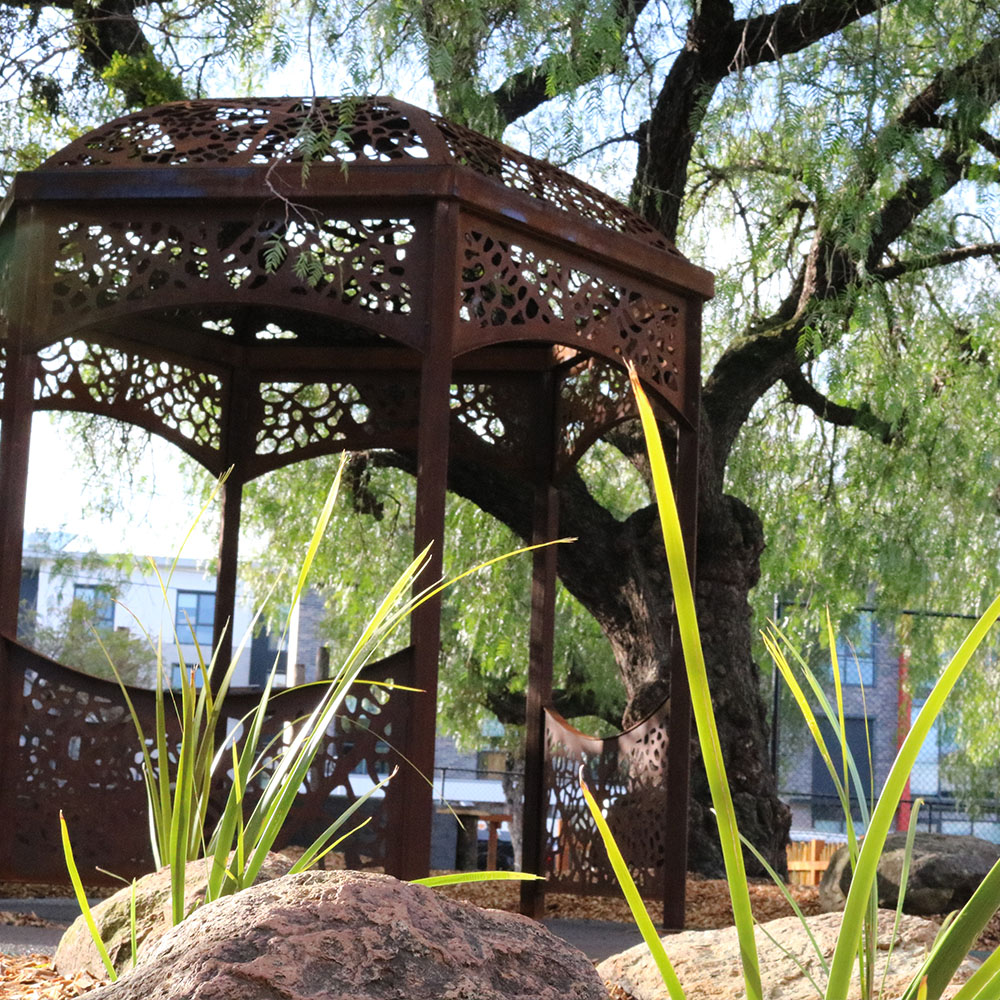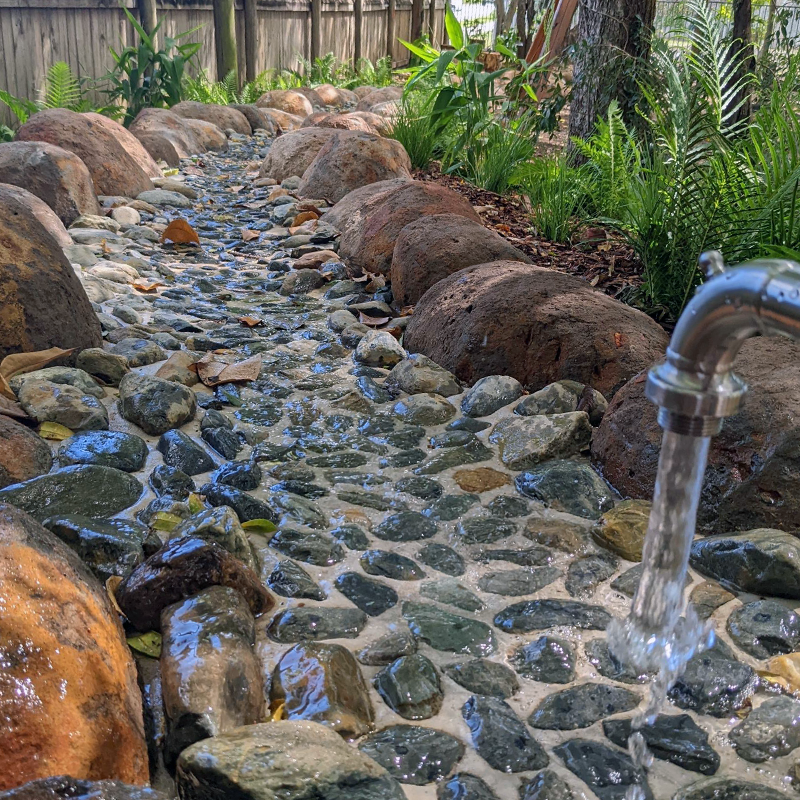PLAY
Natural play offers a freedom that is increasingly rare:
A freedom to discover, to get filthy, get wet, to create and explore.
Play spaces need to be diverse, to provide opportunities for all children to explore, discover and experiment with their world. They need to provide numerous opportunities for autonomous play, to allow children agency to make their own discoveries and failures. This helps children become more resilient, build a stronger sense of self, and improve their problem solving and general cognitive abilities. There should be ample opportunity for this play to be self-directed, allowing educators to step back and observe so the children can create their own play.
Using natural elements in play design help create diverse spaces that change with time – vegetation grows, it flowers, it changes shape constantly and regenerates new play spaces; rocks and logs provide unique forms and habitats for small animals; sticks and general bush refuse provide endless building and play opportunities; rocks and boulders can become anything with a pinch of imagination. Blended with a variety of elements that work together and you have spaces that evolve and that children can observe, experience and contribute to the changing environment around them.
Play spaces need to be diverse, to provide opportunities for all children to explore, discover and experiment with their world. They need to provide numerous opportunities for autonomous play, to allow children agency to make their own discoveries and failures. This helps children become more resilient, build a stronger sense of self, and improve their problem solving and general cognitive abilities.
Using natural elements in play design help create diverse spaces that change with time – vegetation grows, it flowers, it changes shape constantly and regenerates new play spaces; rocks and logs provide unique forms and habitats for small animals; sticks and general bush refuse provide endless building and play opportunities; rocks and boulders can become anything with a pinch of imagination. Blended with a variety of elements that work together and you have spaces that evolve and that children can observe, experience and contribute to the changing environment around them.
Playspaces for Early Learning Centres vary greatly in style and approach, so we take a highly collaborative approach early in the process to ensure we understand the desired scale of the project, any brand-specific characteristics and how the outdoor program might run.
Funding for schools & kindergartens can be sporadic and largely reliant on community & grants, so we take care to ensure that designs are targeted where it is needed most. The process for these projects can vary greatly, and are generally structured specifically to suit, from masterplanning to full design, documentation & construction management.
All our educational play designs are undertaken with an eye towards the long-term goals for the school/kinder and the pedagogical approach to outside as a learning environment.
Check out our instagram and drop us an email via info@stratisla.com, and we can arrange an initial consultation to discuss your ideas, share some of our own, and work together to create a space that is uniquely your own.
HOW DO WE FIT INTO THIS?
As landscape architects it is hardly surprising that we have an agenda to promote interaction with more natural elements. We create spaces using plants, rocks, timber, as many found natural elements as we can safely use. And we don’t do this in a vacuum. All of our designs are backed with research, analysis, experience, and a comprehensive approach to how each element will benefit the children using the space. All of this is situated within a framework of necessary pragmatics – budget, site lines, safety standards and so on.
BUDGET
Our initial discussions with clients regarding space and budget will include a recommended spend based on the desired outcome, which we then refine once an amount is agreed upon. All of our projects are costed through the design process to ensure that we adhere as closely as possible to the prescribed budget.
DESIGN
is collaborative. We work with you to achieve the outcome you’re looking for – it may be an emphasis on nature; but it may also be an emphasis on a particular style or feel, maybe some key elements will be a feature – all of this is developed in consultation with the client and then developed further through feedback sessions as the design progresses. We also offer a smaller consultative and/or conceptual package for community kinders or cooperatives that have limited upfront spends and are aiming to change their space as grants become available. We can work within your means. We want to change as many spaces as we can.
SAFETY
..is always a concern for both parents and educators in the school and early learning environment. This is why all of our centres are designed with an eye towards balancing risk and adventure with meeting the relevant Australian Standards. To ensure we meet these standards we have our designs independently reviewed by child safety auditors and follow up on any recommendations made.
Our team comprises a range of expertise: from horticulturalists who explore the potential of sensory gardens, to play specialists with a pragmatic approach to design, to play testers who just never really grew up
With an emphasis on play and plant materials, our goal is to create diverse spaces that inform a sense of belonging as they grow and change over time

